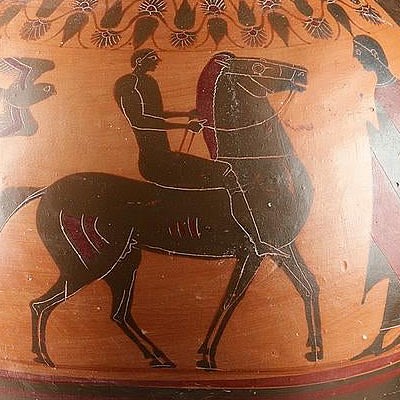Chinese Early Shang Dynasty Bronze Ding
Lot 121a
About Seller
Artemis Fine Arts
686 S Taylor Ave, Ste 106
Louisville, CO 80027
United States
Selling antiquities, ancient and ethnographic art online since 1993, Artemis Gallery specializes in Classical Antiquities (Egyptian, Greek, Roman, Near Eastern), Asian, Pre-Columbian, African / Tribal / Oceanographic art. Our extensive inventory includes pottery, stone, metal, wood, glass and textil...Read more
Categories
Estimate:
$3,000 - $4,500
Absentee vs Live bid
Two ways to bid:
- Leave a max absentee bid and the platform will bid on your behalf up to your maximum bid during the live auction.
- Bid live during the auction and your bids will be submitted real-time to the auctioneer.
Bid Increments
| Price | Bid Increment |
|---|---|
| $0 | $25 |
| $300 | $50 |
| $1,000 | $100 |
| $2,000 | $250 |
| $5,000 | $500 |
| $10,000 | $1,000 |
| $20,000 | $2,500 |
| $50,000 | $5,000 |
| $100,000 | $10,000 |
| $200,000 | $20,000 |
About Auction
By Artemis Fine Arts
Jun 4, 2020
Set Reminder
2020-06-04 10:00:00
2020-06-04 10:00:00
America/New_York
Bidsquare
Bidsquare : Exceptional Antiquities, Asian, Ethnographic
https://www.bidsquare.com/auctions/artemis-gallery/exceptional-antiquities-asian-ethnographic-5185
An important one-day auction featuring museum-worthy examples of Egyptian, Greek, Roman, Etruscan, Near Eastern, Far East / Asian, Pre-Columbian, African / Tribal, Oceanic, Native American, Spanish Colonial, Russian, Fossils, Ancient Jewelry, Fine Art, so much more! Artemis Fine Arts info@artemisgallery.com
An important one-day auction featuring museum-worthy examples of Egyptian, Greek, Roman, Etruscan, Near Eastern, Far East / Asian, Pre-Columbian, African / Tribal, Oceanic, Native American, Spanish Colonial, Russian, Fossils, Ancient Jewelry, Fine Art, so much more! Artemis Fine Arts info@artemisgallery.com
- Lot Description
East Asia, China, Early Shang Dynasty, ca. 1600 to 1300 BCE. A finely decorated, cast bronze "ding", a cauldron for holding food in the grave of an elite member of Chinese society. It features a shallow, round basin with a thick rim and three legs that taper to pointed feet. Large vertical loop handles rise from either side of the rim. Just under the rim, in a wide band around the upper and center body, is a band of cast decorative motifs with deep symbolic meaning - repeated, dragon-like zoomorphic faces and a densely patterned background. This special example also includes some smaller characters in the abstract pictographic writing of early China on its lower body (see more below). Size: 7.5" W x 7.25" H (19 cm x 18.4 cm)
According to the Harvard Art Museum, "One of the earliest forms of Chinese writing is preserved in the simple inscriptions on bronze vessels... Integrally cast into the bronzes - as opposed to being incised into the vessel after the metal had hardened - these marks were usually placed on the interior wall or floor of a vessel… Shang inscriptions tend to be highly pictographic, with many resembling birds, weapons, or humanoid figures. The inscriptions are not always translatable into modern Chinese characters, but most are identifiable as the names of either the aristocratic owners who commissioned the vessels, or the ancestors to whom they were dedicated."
Provenance: ex-private Ventura County, California, USA collection, acquired prior to 2008
All items legal to buy/sell under U.S. Statute covering cultural patrimony Code 2600, CHAPTER 14, and are guaranteed to be as described or your money back.
A Certificate of Authenticity will accompany all winning bids.
We ship worldwide and handle all shipping in-house for your convenience.
#155785Intact aside from a single tiny hole in the basin. Rich deposits and beautiful turquoise patina do not obscure most of the fine details of the piece.Condition
- Shipping Info
-
All shipping is handled in-house for your convenience. Your invoice from Artemis Gallery will include shipping calculation instructions. If in doubt, please inquire BEFORE bidding for estimated shipping costs for individual items.
-
- Buyer's Premium



 EUR
EUR CAD
CAD AUD
AUD GBP
GBP MXN
MXN HKD
HKD CNY
CNY MYR
MYR SEK
SEK SGD
SGD CHF
CHF THB
THB
















